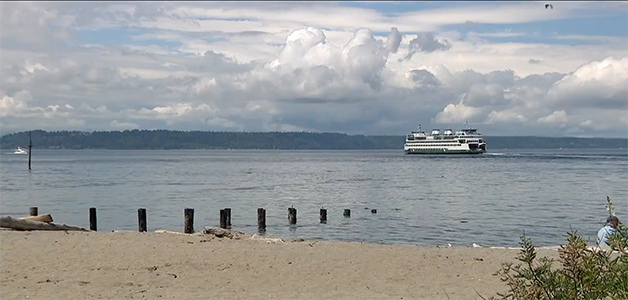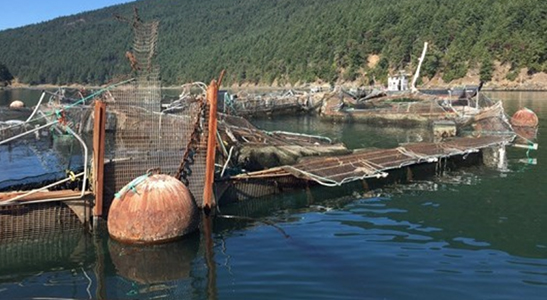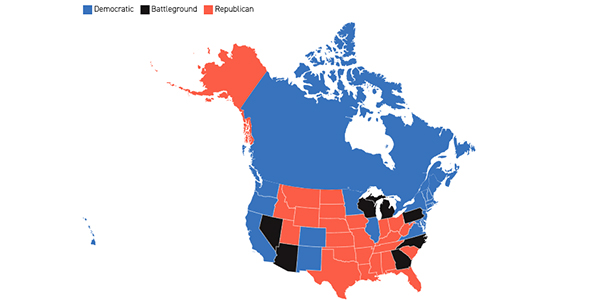By Michel Vekved, President Friends of Moran State Park
There is a distraction driving through Moran State Park and its not the number of deer in the last few weeks, but rather the abundance of sky and sunshine one can see while diving past Camp Moran.
The tree removal project is progressing quickly and powerfully. Unfortunately that means some serious tree removal has taken place close to the road where passersby cannot miss the drastic changes.
These measures are being taken because of the Laminated Root Rot fungus that is spreading among the second growth of Douglas’ fir trees. The most noticeable areas are near Camp Moran and along Mt. Constitution Road near the primitive campground.
This fungus leads to significant root decay, which can render an apparently healthy tree to fall without any notice or reason.
The fungus is spread when healthy roots come into contact with infected roots. By removing the infected tree, the root growth of the infected tree ceases. Trees within a certain radius must be removed in addition to the infected tree to insure controlled management of the fungus. Sometimes this means quite a number of infected and potentially infected but non symptomatic trees are removed. According to the state this is what has happened at Camp Moran.
Certainly, it is sad to see these trees taken down, but the process is to ensure the health of Douglas’ fir forest and the safety of park visitors. The view driving down Mt. Constitution Road is a stark realization of the procedure set forth by the state to do what is needed, what they have researched and planned for in the last few years. It is visually distressing to say the least, but necessary.
Once tree removal work has concluded; a replanting effort will begin with trees that are less susceptible or resistant to the fungus. The tree re-planting will be led by the state park. Friends of Moran will assist in volunteer efforts as will other organizations. We will also work hard with the help of volunteers to continue projects that will inhibit the growth of invasive species while the seedlings begin to generate a new forest.
We have been fielding a few inquiries filled with frustration, rumors and disappointment. Replies to the technical questions must come from the state. This is a state park project, but we do empathize with the sorrow and irritation through the community. We have our own struggle watching this all take place, saddened to see trees cut and knowing that it will take a long time before the area returns to what we are accustom to seeing. I personally know how difficult it is to see this and make sense of it. I shook my head trying to explain this process that was taking place to my two young kids. They were definitely shocked, saddened and then angry, but they are slowly accepting what is best for the forest health and visitors.
In truth, I am glad they were angry and sad; it showed how much they cared for their park. They are learning to speak their mind, ask questions and listen for answers. It also opens the door to how we can embrace this change, because we can. The disturbed forest and harvested trees are not something we can change.
The Annual Clean Up is April 13th and we encourage you to set the day aside and come make a difference. Come embrace the change and have a positive effect. State park budget cuts have been severe and funding our state park is still uncertain. Our park needs volunteer efforts. We hope you will join us anytime from 8 am to 4 pm April 13th. We will meet at the Cascade Lake Day use area. Grab a cup of coffee or cocoa and ask for an assignment. Bring your round pointed shovel if you want to help plant trees. Bring your friends, family and gloves. Join Friends of Moran while we clear branches from trails and campgrounds and debris from road shoulders and shelters. Lunch will be provided.
As a final thought, this week my kids and I parked forlornly next to logging trucks headed off island with trees from Moran. However, later this week in the park the kids noticed the topography around Camp Moran as it gently flattened and rolled to the cabins below and speculated what it will look like when it snows. Then we wondered and hoped that maybe next spring would bring a landscape of foxgloves from the road to the cabins among the cedar saplings.
**If you are reading theOrcasonian for free, thank your fellow islanders. If you would like to support theOrcasonian CLICK HERE to set your modestly-priced, voluntary subscription. Otherwise, no worries; we’re happy to share with you.**








I have eight acres of beautiful ancient firs surrounding my pristine shoreline property.
What type of root examination can a private citizen take to determine if his firs have fungus? Please advise. (360) 376-4172.
Hi Harry.
My name is Bathan Shaner, I am a Certified Arborist, and owner of Shaner Excavation & Tree Service LLC. I offer site inspections free of charge. If we notice signs of root rot or something else causing a decline in health, I can do core samples or send samples off to a lab for results. Please call or email. Thanks, Bathan 360-317-6220/bathanshaner@gmail.com
Does anyone know how much a board foot these trees are worth? Also, what is the State’s monetary haul for selling these trees? Thanks! Spirit Eagle
Thank you for explaining the change in Moran that has been as mystifying as it is upsetting. In a similar experience, I lived in Kenilworth, Illinois, and loved the Dutch elms both near our house and creating a beautiful tunnel of shade on Kenilworth Ave. Then one year when I went back for a New Trier High School reunion, I saw that due to Dutch elm diseas, all those elms were gone. Many grieved.
Hoping on Clean-up day, there will be free parking.
Nice article Michel.
Hire local… add to the local economy!
There is NO DEFINITIVE TEST to determine whether a Doug fir is infected with laminated root rot, without examining the root ball (after cutting it down or after it has fallen down on its own). There are at best some signs only in the late stages of laminated root rot, and it is worth reading the information at https://ext.nrs.wsu.edu/forestryext/foresthealth/notes/laminatedrootrot.htm
and by googling “laminated root rot” uw and reading the PDF’s.
And take a look at how seriously Weyerhauser takes this issue.
We have had one of our trees examined by three different certified arborists, and had the tree bored and tomographed at great expense. These processes only tell you what is happening above ground. The root rot occurs underground … and even drilling into the roots underground does not give a definitive answer. I would be leery of any offer of a test to determine the presence of laminated root rot in an apparently healthy tree.
There is a serious outbreak of laminated root rot where we live which resulted in a perfectly healthy-appearing tree of 100 feet crashing down in our neighbors land … no fallen branches, no yellowing tops, NO WARNING.
That is why Moran is taking such drastic steps … to protect the rest of the forest … and the people who walk through the forest.
I HATE watching this happen to our forest land, and hope that there is a fungus which can stop this insidious rot (see Paul Stamets’ work in this area) but any solution so far is in the distant future.
This is an extremely serious problem for the entire Northwest Doug fir population.
The natural world selectively weeds out trees, this happens everywhere, we call it
“laminated root rot.” Legally we could have just closed the campgrounds to camping and we could have saved all those trees. All of Moran has trees with root rot, how do you think trees fall over in the woods? Let’s evolve toward a better understanding of how to live in harmony.
I am sorry to say that my family has been in logging for so many years. This logging was not done selectively. This was a clear cutting tactic. Who was the arborist specialist…..Was he hired by the mill that the trees were going to be sold to….I too would like to see the tracking of the money that is made from the logging and clear cutting 20 plus acres..
I agree with the above concern – has the logging been done by on island locals? If not, why not? Also, why couldn’t the logs have stayed here – been milled and used here?Perhaps we could get a followup story on that?